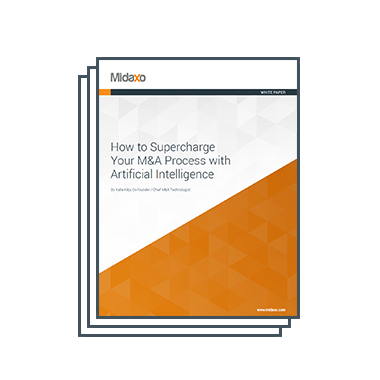In a recent webinar with Sami Miettinen, Partner, Translink Corporate Finance, we discussed closing deals in a virtual world. Here are some key themes.
It’s a Buyer’s Market Now
Amid continued uncertainty caused by COVID, the M&A landscape is in a state of flux. And with much of the global economy paused, it’s no longer business as usual for dealmakers. Key concerns include access to financing as credit markets tighten, valuation issues, getting creative with deal structuring and uncertainty over the long-term sustainability of certain business models. Against this backdrop, deal teams are working in a continually evolving deal environment, for which there is no playbook.
The deal conditions brought about by COVID have put an end to a period of record M&A activity. Some deals are still being completed; some companies have ramped up their M&A activity in a bid to capitalize on opportunistic deals. And of course, some deals have been put on hold or outright aborted. In terms of deal dynamics, it’s now a buyer’s market. Those on the sell-side will be keen to transact with buyers that can close a deal promptly, while buyers will no-doubt appreciate not being subjected to a protracted auction process.
Watch out for “Zoom Fatigue”
Much of deal-making activity has already gone digital – with virtual data rooms and video conferences having been in use for many years. It seems the current environment is pushing this to the extreme, however – and perhaps even accelerating changes that were inevitable – namely a significant reduction in deal-related travel. The current situation highlights how unnecessary it can often seem to travel internationally for the sake of a short meeting – sometimes just an hour. Naturally, some elements of the deal-making process must be conducted in-person/on-site. But looking forward, we can expect many deal teams to embrace a new way of working where video will feature a lot more.
An upside to home working via video means the daily commute is reduced to moving between rooms – perhaps bedroom to the kitchen. This time saved can be devoted to catching up on long-neglected admin or business development activities (arguably more crucial than ever). One widely reported downside, however, is so-called “Zoom fatigue” (i.e. staring face-to-face on camera for an hour and not being able to properly read body language doesn’t come naturally for most).
Key suggestions for a successful virtual M&A negotiation meeting include:
- Keep meetings to 45 minutes (everyone will be pleased to get 15 minutes back);
- Work to a set agenda (circulated well in advance);
- Maintain a way of communicating with colleagues behind the scenes (such as using a private Slack/chat channel that deal counter-parties cannot access).
With Change Comes Opportunity… but Discipline is Needed
Many companies are in survival mode – looking to protect core business operations and employees, preserve cash-flow and retain customers. Of course, some companies will be better prepared to weather the storm. Indeed, strong balance sheets showing healthy cash reserves and declining valuations create opportunities for M&A to be highly accretive. For private equity, there is an opportunity for value creation via making distressed purchases (transacted on a lower multiple), subsequently increasing earnings over a holding period and exiting at a higher multiple. However, many PEs are currently devoting attention to nursing their current portfolios and assessing the damage – rather than being in acquisition mode.
It’s critical to have a list of strategic acquisition criteria on hand to benefit from prevailing market conditions and opportunistic acquisitions. Where a company already has a well-defined set of criteria, now could present the perfect time to press reset to account for the change the world is witnessing (i.e. think of changes to business models and supply-chain disruption). A word of warning, however: going on an opportunistic M&A spending spree without a strategy must be avoided. It’s also notable that not all sectors are “for sale” – for instance, many software companies have out-performed the market over the past few months in terms of market capitalization.
We can expect a few key themes going forward when it comes to the new M&A archetype. COVID will have exposed a lot of operating inefficiencies across many sectors. With this comes an opportunity for change. Change could take the form of consolidation/roll-up within particular sectors (particularly hard-hit sectors such as retail, transport, travel, hospitality, oil & gas) as acquirers target economies of scale and value creation opportunities. Another option is for dealmakers to consider alliances, joint-ventures and partnerships as a way to address COVID-related disruption (e.g. across supply chains).
The Need to Re-Align on Value Drivers
On-site due diligence is frozen under current conditions. The result is many site visits cannot be conducted, interviews with key management are reduced to Zoom (see above), and the general “pulse check” of a company that can only be taken on-site is not possible. While remote due diligence is feasible, it will cause delays and could prove too much for some deal teams. A collaborative M&A platform can help here.
There are many parts to the value-creation equation – even if an acquisition is transacted on a much lower deal multiple. So it’s crucial for companies still embarking on M&A to not take value creation for granted. Estimating synergies and identifying value creation levers is difficult at the best of times. With current uncertainty, synergy estimates will need to be revised and made with consideration given to the future operations of the target and the industry/vertical in which it operates. Furthermore, M&A steering committees/boards of directors are likely to become much more selective when it comes to signing-off on deals – so deal rationales must be compelling.
Deal teams might find it useful to categorize or “bucket” key risks, which could adversely impact any value creation/synergy assumptions made pre-COVID.
Examples include:
- Workforce – e.g. are there any furlough measures, which impact the target;
- Customer contracts and revenue risk – e.g. are contracts subject to monthly or annual renewal;
- Supply chain – e.g. the countries the target is exposed to, the level of disruption caused to-date/forecast, and what alternative suppliers are available;
- Government measures and financial resources in place – based on the jurisdiction of the target;
- Financing and cash-flow headroom;
- Real estate – e.g. lease payment holidays or ability to terminate, the extent to which a target relies on a physical footprint and the scale to which value could be created via a real estate rationalization program;
- Operating contracts – i.e. the target’s ability to perform under existing contracts;
- Business model – does the target operate under a legacy business model impacted by COVID (or likely to be).
Deal Structuring
Upfront cash offers will be king as credit markets tighten, and the future availability of deal funding remains uncertain. Because of COVID, any astute acquirer will likely be less confident of a target’s projected revenue and earnings. Accordingly, we can expect more deals where part of the purchase price is paid upfront, with the balance of consideration being deferred and based on an earn-out mechanism (buyer’s pushing for a 50%/50% split of upfront cash consideration and deferred via earn-out doesn’t seem inconceivable – yet is going to be hard for sellers to stomach).
COVID increases the likelihood of a rise in disputes over closed deals where earn-outs are still being settled and perhaps, have fallen victim to business disruption. Additionally, future earn-out mechanisms could become overly complicated as deal teams try to price-in a myriad of future uncertainties. Ultimately, it will be necessary for deal teams on both sides to remain pragmatic and shoulder some of the risk when it comes to structuring deals in attempting to account for future uncertainty.
Working capital is another part of deal structuring likely to be impacted. The working capital mechanism of a deal presents an easy way for value to be lost if it’s not structured and negotiated correctly. Approached correctly, an acquirer or seller can use this mechanism to improve their respective pricing position and to protect against hostile value shifting. A common assumption of an acquirer’s offer is that the target will have a “normal level of working capital” at deal close. This assumption will result in an adjustment to Equity Value to the extent that working capital at completion is not “normal.”
A working capital mechanism is typically included within a deal structure to prevent the seller from stripping this capital from the company at or before deal close to the point where the acquirer would need to inject additional capital to fund operations post-close (effectively increasing the purchase price). For any deal transacted over the past few months, working capital will likely have deviated significantly from the norm between signing and closing – thus causing delays to closing as negotiations are held. As for future deals, how a “normal” level of working capital should be defined and whether acquirers should seek additional working capital buffers/headroom comes into question.
The “Act of God Clause” is Under Scrutiny
Some buyers having entered into M&A transactions at pre-COVID valuations may wish to seek termination or renegotiate the purchase price before closing and will be looking for ways to do so without encountering liability. Sellers, conversely, will likely wish to proceed to closing and look for ways to push acquirers to close under previously agreed terms. This brings us to a topic that cannot be ignored – and that is the infamous MAC clause.
Many M&A transaction agreements contain a “material adverse change” (MAC) clause. The crux of this clause is that an acquirer should not be obligated to close a transaction if the target suffers a material adverse change – or a force majeure event – between signing and closing. Whether COVID constitutes a material adverse change – or force majeure event – is unlikely but will depend on the specific language included in the transaction documentation (i.e. the SPA).
MAC clauses typically include several “carve-outs”, agreed between the parties of a deal. These carve-outs identify events that will not constitute a material adverse change. Common examples include the general health of the economy or financial markets, the condition of the industry/vertical in which the target operates, war/terrorism and so-called “acts of god”. To trigger a MAC clause, a material adverse change must be specific to a company – thus a global health pandemic is unlikely to qualify under any transaction agreements drafted pre-COVID. Looking to future deals, sellers are already beginning to add carve-outs relating to COVID/epidemics into new MAC clauses. Ultimately, the unknowns of COVID have opened the door to many more conversations around closing conditions and the right to walk away from transactions.
Takeaways
- Closing deals virtually is possible – it takes discipline, creativity and cooperation from all parties. And watch out for Zoom fatigue.
- The deal opportunities presenting themselves must be considered with caution and demonstrate a strong strategic fit. Haphazard M&A spending sprees must be avoided.
- Value creation is possible, but it’s not a given, even if deals are transacted at reduced deal multiples.
- Deal structures will change to reflect increased future uncertainty – more emphasis will be placed on deferred consideration, earn-outs and other mechanisms where both acquirer and seller can shoulder perceived future risk/uncertainty;
- M&A transaction agreements – both drafted pre-COVID and to be drafted in the future – will be under intense scrutiny with regards to “act of god”/ material adverse change/force majeure clauses.





